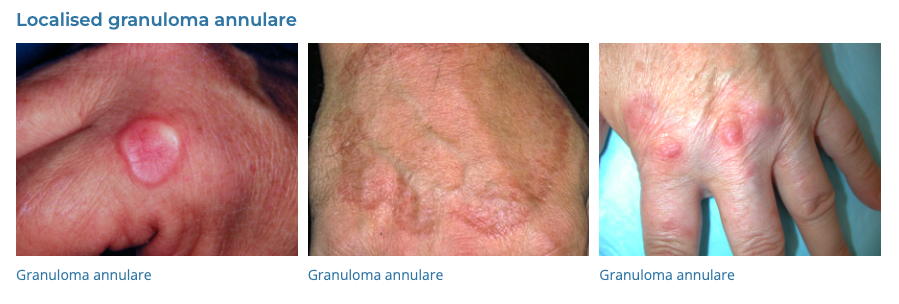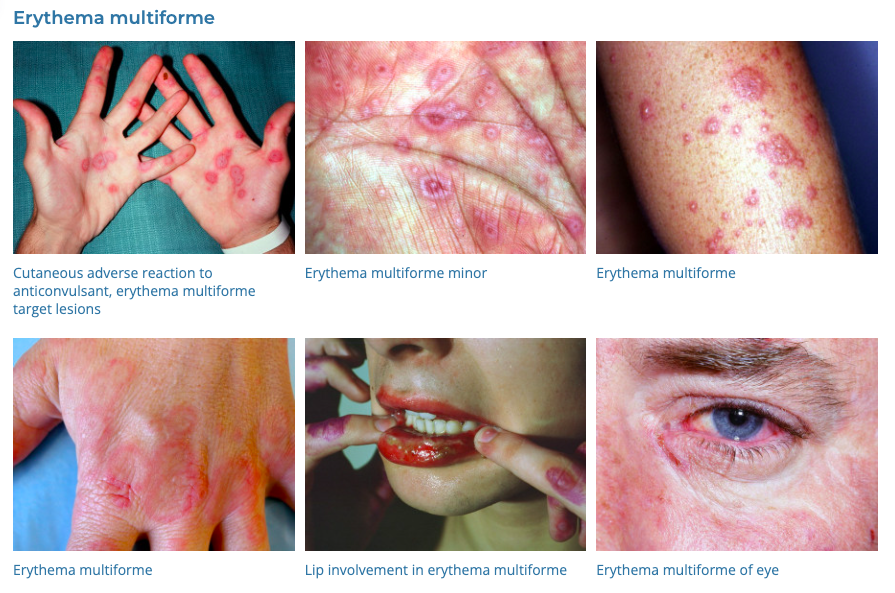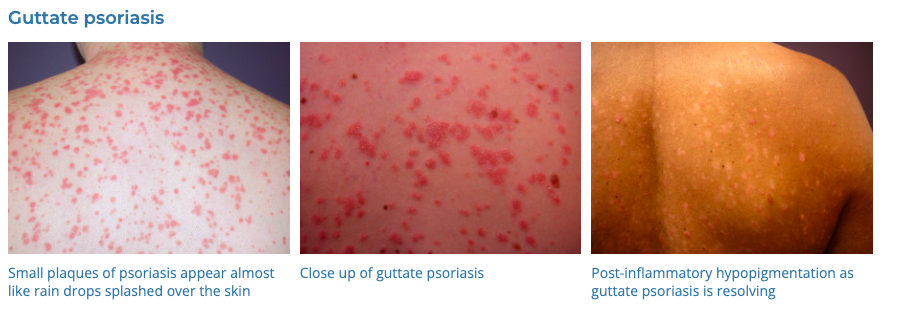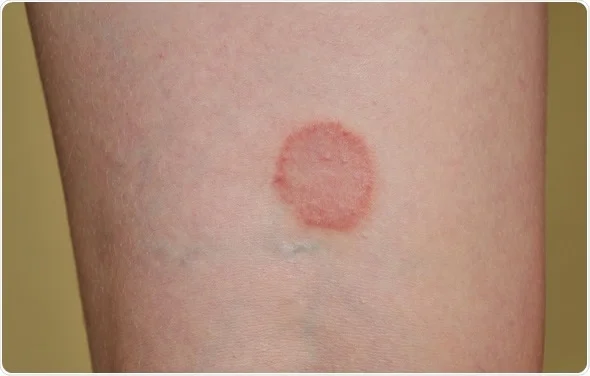Annular Rash (like ringworm)
An annular or arcuate rash, characterized by a ring shape with central clearing, can be caused by several conditions. Some of these may include:
- Tinea Corporis (Ringworm): This common fungal infection is caused by dermatophytes and appears as a red or silvery ring-like rash on the body. The rash often has a scaly, raised border and a clear or normal-appearing center. It is typically contracted through direct contact with an infected person or animal, or by touching contaminated objects or surfaces.
- Erythema Migrans: The initial rash seen in Lyme disease, caused by the bacterium Borrelia burgdorferi, which is transmitted through the bite of an infected Ixodes tick. The rash typically begins as a small red area that expands over time, forming a circular, triangular, or oval shape.
- Granuloma Annulare: This benign skin condition appears as firm, bump-like lesions arranged in a ring on the skin. Its exact cause is unknown, but it may be related to immune system reactions or minor skin injuries. It can occur on any part of the body, often affecting the hands and feet.
- Pityriasis Rosea: This rash typically begins as a single, large pink patch on the chest or back (Herald patch), followed by smaller patches in a “Christmas tree” pattern. The exact cause is unknown, but it’s thought to be triggered by reactivation of herpesviruses 6 and 7.
- Erythema Annulare Centrifugum: This chronic, benign, annular and figurate erythema is associated with underlying diseases such as infections, drugs, malignancies. The exact cause is not always clear, and it may be a reaction pattern to various triggers.
- Erythema Multiforme: This condition presents with target-like lesions, often triggered by infections (especially herpes simplex virus), certain medications, and other factors. It has a central darker area surrounded by a paler ring, and an outer ring that’s red and slightly raised.
- Urticaria (Hives): Urticaria lesions are typically transient and edematous but can sometimes present as annular rashes. Causes include allergic reactions, infections, medications, and physical stimuli like heat or pressure.
- Psoriasis: This chronic autoimmune condition more commonly presents with erythematous plaques with silvery scales. Some variants, like guttate psoriasis, may appear as annular lesions and are often triggered by infections, such as streptococcal pharyngitis.
- Annular Lichen Planus: A variant of lichen planus that presents with annular lesions with raised violaceous borders. The exact cause of lichen planus is unknown, but it is thought to be related to an immune-mediated response triggered by various factors, including infections, medications, and allergens.
This is not an exhaustive list, and some other skin or systemic conditions can cause similar rashes. If you or someone else has such a rash, it’s important to consult with a healthcare provider for an accurate diagnosis and treatment.









